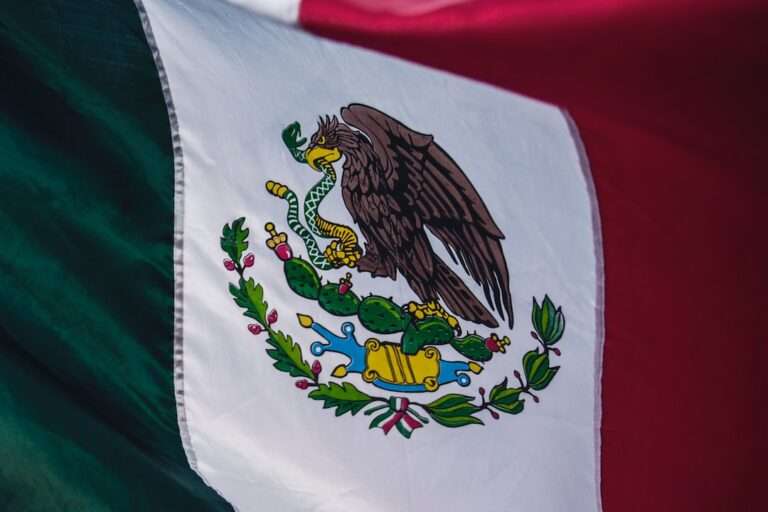The Majestic Eagle: Exploring the Symbolism and Spiritual Significance of this Iconic Bird

The eagle is a majestic and powerful bird that has captivated the human imagination for centuries. It holds a significant place in various cultures and traditions around the world, symbolizing freedom, strength, and spirituality. From ancient mythology to modern-day national symbols, the eagle has left an indelible mark on human history.
Key Takeaways
- The eagle is a significant symbol in various cultures and traditions.
- The eagle represents freedom, independence, strength, power, resurrection, and renewal.
- Native American traditions view the eagle as a spiritual symbol.
- The bald eagle is a national symbol of the United States.
- Eagle conservation is crucial due to threats and challenges.
The Eagle as a Symbol of Freedom and Independence
Throughout history, the eagle has been used as a symbol of freedom and independence. Its ability to soar high in the sky represents the human desire for liberation from constraints and the pursuit of individuality. In ancient Rome, the eagle was associated with Jupiter, the king of gods, and was used as a symbol of imperial power. The Roman legions carried eagle standards into battle, signifying their strength and dominance.
In more recent times, the bald eagle has become a symbol of freedom in the United States. It was chosen as the national bird in 1782 because of its majestic appearance and its association with liberty. The bald eagle is depicted on the Great Seal of the United States, clutching arrows and an olive branch in its talons, symbolizing both the country’s readiness for war and its desire for peace.
The Spiritual Significance of the Eagle in Native American Traditions
In Native American cultures, the eagle holds a sacred place as a spiritual animal. It is believed to have a direct connection to the divine and is often seen as a messenger between humans and the spirit world. The eagle’s ability to fly high in the sky is seen as a metaphor for spiritual enlightenment and transcendence.
The eagle is often used in spiritual practices and ceremonies among Native American tribes. Its feathers are considered sacred and are used in rituals to bring blessings, protection, and healing. The feathers are also used in traditional regalia and headdresses worn by tribal leaders and warriors, symbolizing their connection to the spiritual realm and their role as protectors of their people.
The Eagle as a Symbol of Strength and Power in Ancient Mythology
| Mythology | Eagle Symbolism | Meaning |
|---|---|---|
| Greek | Zeus’ Eagle | Represents power, strength, and victory |
| Roman | Aquila | Symbolizes courage, leadership, and immortality |
| Norse | Veðrfölnir | Signifies wisdom and knowledge |
| Native American | Bald Eagle | Represents freedom, courage, and spirituality |
In ancient mythology, the eagle is often depicted as a symbol of strength and power. In Greek mythology, Zeus, the king of gods, was said to transform into an eagle to carry his thunderbolts and maintain his dominion over the heavens. The eagle was also associated with the goddess Athena, representing her wisdom and strategic prowess.
In Norse mythology, the eagle was believed to be a messenger of the gods and was associated with Odin, the chief god. It was said that Odin would send his eagle familiars to gather information from the mortal realm and bring it back to him in Asgard.
The Eagle in Christianity: A Symbol of Resurrection and Renewal
In Christian symbolism, the eagle is often associated with resurrection and renewal. It is believed to represent the ascension of Christ and his victory over death. The eagle’s ability to soar high in the sky is seen as a metaphor for Christ’s resurrection and his triumph over sin and evil.
The eagle is often depicted in Christian art and literature, symbolizing spiritual enlightenment and divine grace. In the Bible, the book of Isaiah describes how those who wait upon the Lord will “mount up with wings like eagles” and soar above their troubles.
The Eagle as a National Symbol: The Bald Eagle in the United States

The bald eagle has been a national symbol of the United States since 1782 when it was chosen as the country’s emblem. It represents freedom, strength, and resilience, reflecting the ideals upon which the nation was founded.
The bald eagle’s significance in American culture and politics can be seen in its presence on various national symbols, including coins, flags, and official seals. It is also protected by federal law, with strict regulations in place to ensure its conservation and preservation.
The Eagle in Art and Literature: Depictions and Interpretations
The eagle has been a popular subject in art and literature throughout history. It has been depicted in various forms, from realistic portrayals to abstract interpretations. In art, the eagle is often used as a symbol of power, freedom, and spirituality.
In literature, the eagle is often used as a metaphor for strength, courage, and wisdom. It is frequently associated with heroes and leaders who possess these qualities. The eagle’s ability to soar high in the sky is seen as a representation of the human spirit’s capacity for greatness.
The Eagle as a Totem Animal: Its Meaning and Significance in Shamanism
In shamanic traditions, the eagle is often considered a totem animal, representing specific qualities and characteristics that individuals can embody or seek guidance from. The eagle is associated with vision, clarity, and spiritual insight. It is believed to have the ability to see beyond the physical realm and into the spiritual dimensions.
Shamans often call upon the eagle for guidance and protection during their spiritual journeys. They believe that by connecting with the eagle’s energy, they can gain access to higher levels of consciousness and receive messages from the spirit world.
The Importance of Eagle Conservation: Threats and Challenges
Despite its cultural significance, eagle populations around the world are facing numerous threats and challenges. Habitat loss, pollution, climate change, and illegal hunting are all contributing to the decline of eagle populations.
Conservation efforts are crucial to protect these majestic birds and ensure their survival for future generations. Efforts include habitat restoration, captive breeding programs, public education campaigns, and stricter enforcement of laws against illegal hunting and trade.
The Enduring Significance of the Majestic Eagle in Modern Times
In conclusion, the majestic eagle holds a significant place in various cultures and traditions around the world. It symbolizes freedom, strength, spirituality, and resilience. From ancient mythology to modern-day national symbols, the eagle has left an indelible mark on human history.
The enduring significance of the eagle in modern times highlights the importance of preserving this majestic animal for future generations. Conservation efforts are crucial to protect eagle populations and ensure that they continue to inspire and captivate us with their beauty and symbolism. By working together, we can ensure that the eagle’s legacy lives on for generations to come.
If you’re interested in exploring the symbolism of the eagle, you might also find the article on the symbolism of the snake intriguing. Snakes have long been associated with various meanings and interpretations across different cultures and belief systems. To delve deeper into this fascinating topic, check out this article on the symbolism of a snake. Discover how this enigmatic creature has been perceived throughout history and what it represents in different contexts.
FAQs
What is eagle symbolism?
Eagle symbolism refers to the use of eagles as a representation of certain ideas, values, or beliefs in various cultures and traditions.
What does the eagle symbolize?
The eagle is often seen as a symbol of strength, courage, freedom, and power. It is also associated with wisdom, vision, and spirituality.
What cultures use eagle symbolism?
Eagle symbolism is found in many cultures around the world, including Native American, Greek, Roman, Egyptian, and Christian cultures.
What is the significance of the eagle in Native American culture?
In Native American culture, the eagle is considered a sacred bird and is often seen as a messenger between humans and the divine. It is also associated with the four elements (earth, air, fire, and water) and is believed to have healing powers.
What is the significance of the eagle in Greek mythology?
In Greek mythology, the eagle is associated with Zeus, the king of the gods. It is often depicted carrying his thunderbolts and is seen as a symbol of power and authority.
What is the significance of the eagle in Christian symbolism?
In Christian symbolism, the eagle is often used to represent the resurrection of Jesus Christ. It is also associated with the four evangelists (Matthew, Mark, Luke, and John) and is seen as a symbol of spiritual renewal.
What is the national bird of the United States?
The national bird of the United States is the bald eagle. It is a symbol of freedom and is featured on the Great Seal of the United States.





